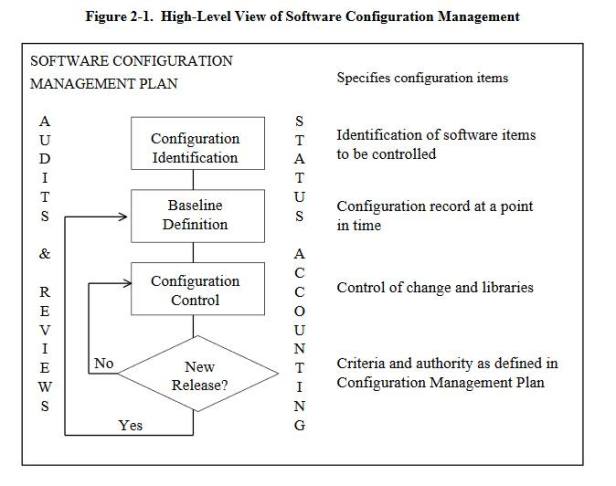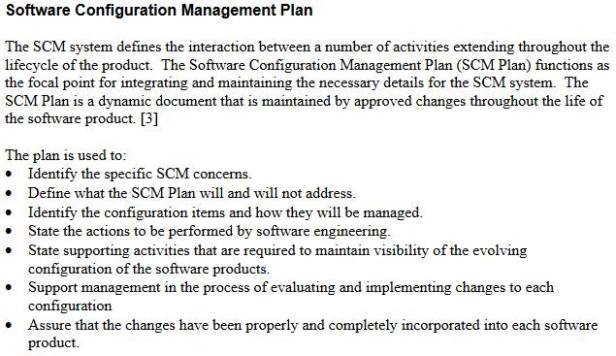
The purpose of Software Configuration Management is to establish and maintain the integrity of the products of the software project throughout the project’s software life cycle. Software Configuration Management involves identifying configuration items for the software project, controlling these configuration items and changes to them, and recording and reporting status and change activity for these configuration items.
The first SCM was used in 1950 and was made by hand on cards or tapes. Now there are a lot of SCM implementations like Plan Change Documentation, Source Safe, Vertical Sky and Git.
PROCESS:
- Identification of object in a software configuration
- Version control
- Change control
- Configuration Auditing
- Reporting

ADVANTAGES
- Reduced redundant work
- Effective management of simultaneous updates
- Avoids configuration-related problems
- Facilitates team coordination
- Helps in building management; managing tools used in builds
- Defect tracking: It ensures that every defect has traceability back to its source
DISADVANTAGES
- A file that has changed many times is going to consume a lot of unnecessary space because all the changes are going to be stored.
EXAMPLES:
- Git
- Trac
- Visual Source Safe
- Microsoft visual studio 2010
- ALM
- Harvest
- AccurRev
- ClearCase
- Set-Liber
